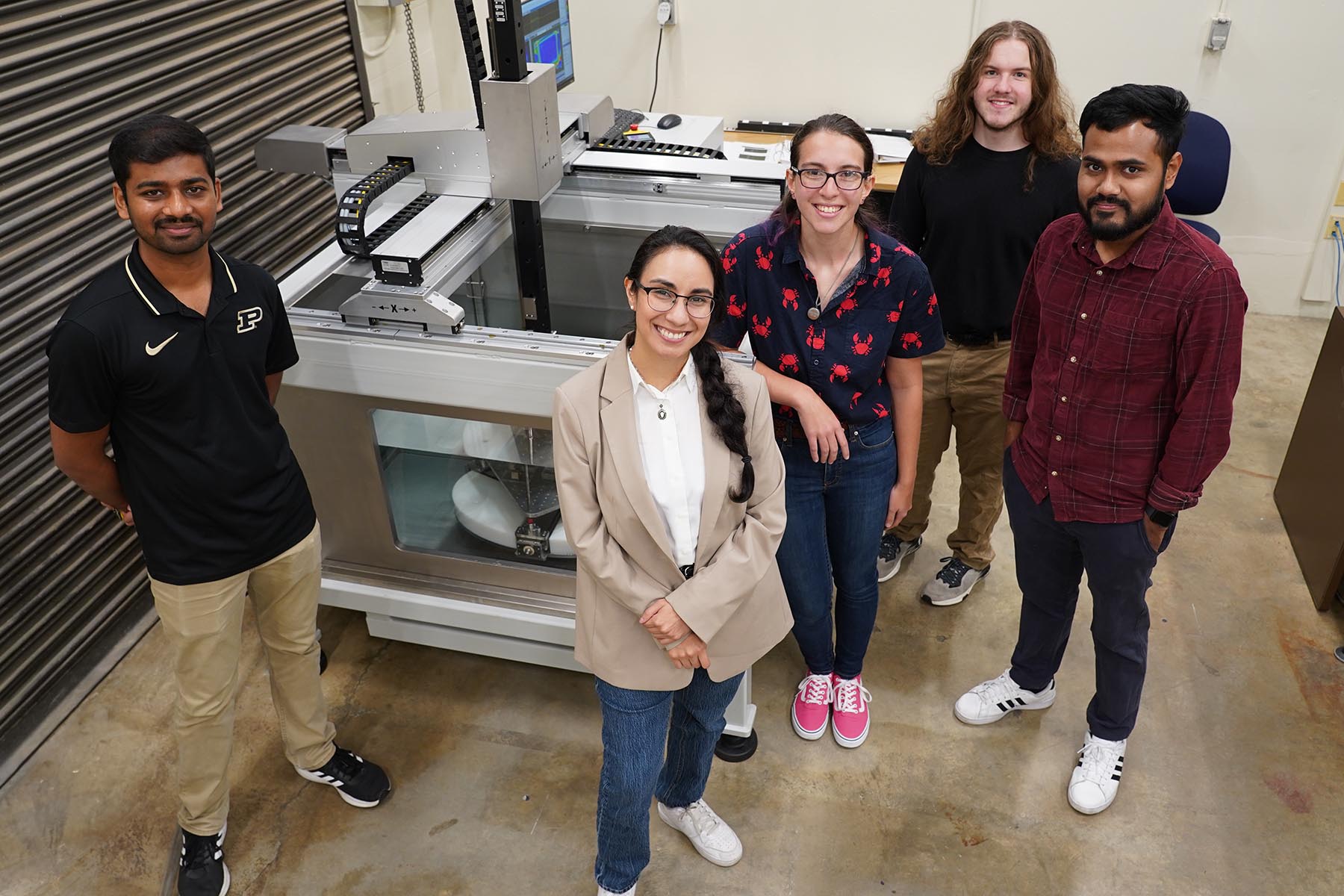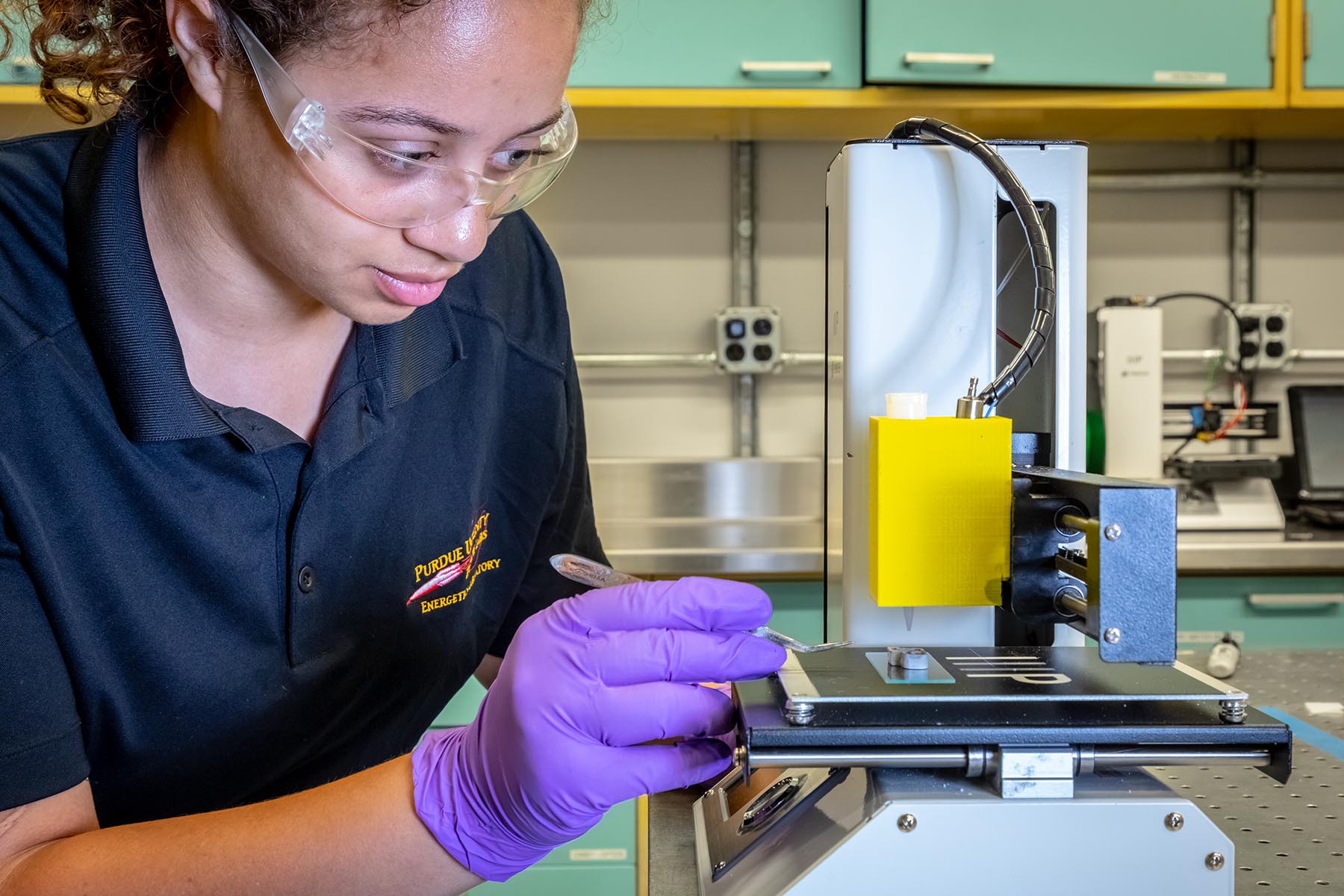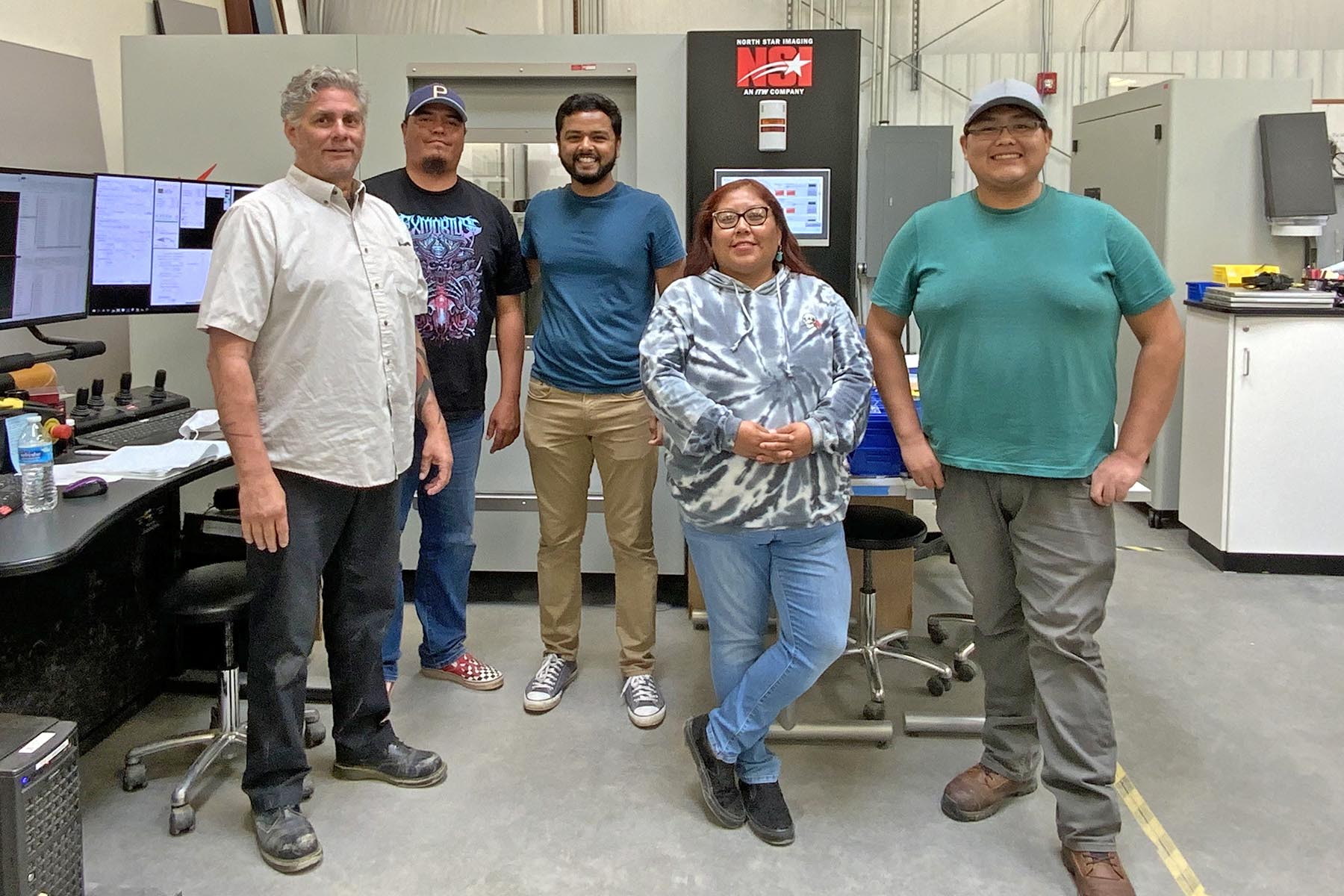Design & Manufacturing
If you want to build it, first you’ve got to design it. That’s why Design & Manufacturing is such a vital aspect of engineering research at Purdue, discovering the ideals for mechanical systems, computational models, and human ergonomics.
Human beings and machines are interacting in new and unique ways in the 21st century. In one Purdue lab, researchers use toys and video games as a vehicle to study how humans utilize creativity in the smartphone era. In another, faculty are studying materials at the nanoscopic level, to determine how best to manufacture the nanomaterials of the future. Another lab compares traditional manufacturing techniques with open-source culture, mapping out new paradigms for social and technical systems.
Design also collaborates with and strengthens other areas of engineering, like biomechanics, robotics, manufacturing, and vehicles.
Faculty in Design & Manufacturing
Adaptive structures
Mechanical metamaterials
Robotic materials
Programmable structures
Multistable structures
Structural nonlinearity
Elastic instabilities
Structural dynamics
Nonlinear vibrations
Renewable Energy Materials (physics-based energy yield predictions, sustainable PV and energy storage materials, recycling)
Electro-Optical-Thermo-Mechanical Reliability (in-situ and in-operando accelerated stress tests)
Heterogeneous Integration & Advanced Packaging (sub-10 μm pitch interconnects, low-loss interposers)
Harsh Environment Electronics Integration (high temperature Pb-free solders and nano-thermal interfaces)
Uncertainty propagation
Inverse problems
Propagation of information across scales
Optimal learning
Materials by design
Growing robots
Soft robotics
Bioinspired systems
Wearable robots
Haptics
Soft matter
Modeling and experimental studies on processing
Structure property relationships in polymer films and moldings and polymer/metal/ceramic hybrid systems
Multi-scale robotic manipulation and assembly
Mobile micro/nano robotics
Micro/nano aerial vehicles
Micro-Bio robotics
Mechatronics
MEMS/NEMS
Automation for the life sciences
Dynamic systems and control
Mechatronics
Digital and functional printing and fabrication
Motion and vibration control and perception
Embedded systems and real-time control
Bio-inspired and mechanically adaptive electronics
Multimaterial additive fabrication
Soft actuators (artificial muscles)
Wearable actuators (haptics)
Polymer design and polymer physics
Deformation sensors and transistors
Composites materials design and manufacturing
Sustainable and recyclable-by-design polymers and composites
Polymer processing and characterization
Composites recycling
Hybrid manufacturing systems
Multiscale modeling
Damage mechanics
Design optimization
Probabilistic and statistical methods
Reliability-based and robust design
Uncertainty quantification for machine learning
Cooperative learning
Acoustics
Vibrations
Active noise and vibration control
Smart materials
Intelligent structures
Wearable biomedical devices
'Crack’-driven transfer printing technology
Scalable manufacturing technology
Mechanics and materials for flexible/stretchable electronics
Sustainable manufacturing
Environmental life cycle assessment
Mechanics of multilayered systems
Adhesion in paints and coatings
Lightweighting strategies for transportation
Robotics
Marine Robotics
Unmanned Systems
Energy Autonomy
Systems Design
Coordination and Controls
Bio-inspired designs
Surface engineering and multifunctional materials
Convergent Manufacturing for Industry 5.0: hybrid manufacturing processes, heterogeneous materials, and bio-inspired designs
Systems integration, productization, and production
Heavy-duty machines: machining, lubrication, and corrosion
Heterogeneous and hierarchical integration (mechanical-electrical-optical and nano-micro-meso-macro)
Precision agricultural and food: cellular agriculture, vertical farming, micro-production, and resilience
Frugal engineering, social innovations, and social equity
Manufacturing in space
Computational Design of Socio-Technical Systems
Secure Design and Manufacturing
Engineering Design by Self-Organized Virtual Communities
Integrated Products and Materials Design
Mechanobiology and biomechanics
Diagnostics
Bacterial biophysics
Micro/nano fluidics and transport
Biotechnology development
Physicochemical hydrodynamics
Measurement tools
Biomedical devices and wearables
Human Skill and Augmentation
Collaborative and Hybridized Intelligence
Deep Learning of Shapes and Computer Vision
Human-Robot-Machine Interactions
Making to Manufacturing (M2M)
Factory of the Future and Robotics
Manufacturing Productivity
Contact mechanics
Stresses, fatigue and friction of rolling/sliding
Micro-mechanics of boundary and mixed lubrication regimes
Spall initiation and propagation
Surface science and damage
Dynamics of ball and rolling element bearings and rotating systems
Friction induced vibration and squeal in dry contacts
Friction and wear of dry and lubricated contacts
Virtual tribology
Dry and lubricated fretting wear
MEMS for in-situ monitoring of tribological contacts
Discrete element modeling
Design
Multi-process/multi-material additive manufacturing
Nondestructive evaluation
Advanced acoustic materials and metamaterials
Ultrasonics
Computational and experimental solid mechanics focused on fatigue, fracture, and multi-physics phase evolution problems
Computational techniques including Finite Element Analysis (FEA), Isogeometric Analysis (IGA), geometric modeling, CAD and optimal design
Heterogeneous Integration and Advanced Electronics Packaging with a focus on thermomechanical behavior, reliability, and electrical-thermal-mechanical co-design
Multiscale superfast 3D optical sensing
Biophotonic imaging
Optical metrology
Machine/computer vision
3D video telepresence
3D video processing
Virtual reality
Human computer interaction
Environment friendly design and life cycle engineering
Applications of bio-based materials in manufacturing
Fast and low-cost detection of pathogenic microorganisms
Biomass thermo-chemical upgrading for liquid and gaseous fuel
Deformation, stress, plasticity, fracture
Multiscale modeling, first-principles, molecular dynamics simulations, and finite element modeling
In-situ experiments
Mechanics of redox active materials - Li-ion batteries, Na-ion batteries, all-solid-state batteries
Mechanics of polymeric materials - organic electrochromics, superelastic organic semiconductors
I want to research in
I want to have an impact in...








